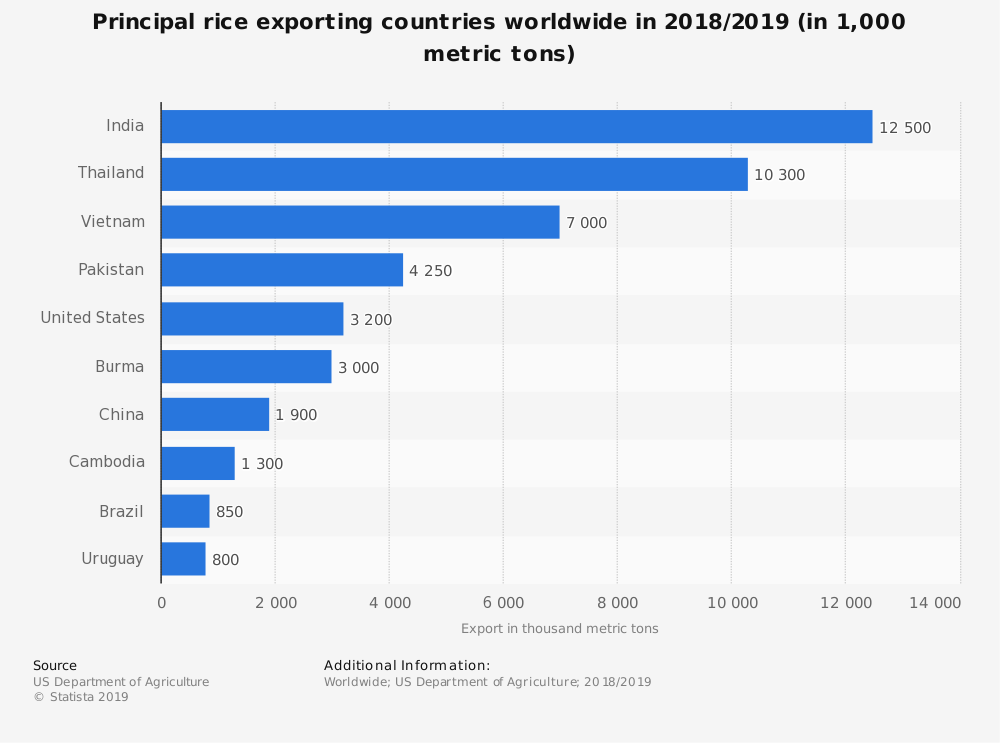This is how rice is hurting the planet

Could rice be as damaging as a power plant? Image: REUTERS/Navesh Chitrakar

Get involved with our crowdsourced digital platform to deliver impact at scale
Stay up to date:
Future of the Environment
Global rice production is releasing damaging greenhouse gases into the atmosphere, doing as much harm as 1,200 average-sized coal power stations, according to the Environmental Defense Fund (EDF).
The UN Food and Agriculture Organization (FAO) estimates around 770 million tonnes of rice were produced in 2018, with China and India responsible for approximately half of that amount. The predominant method for growing the crop is to flood paddy fields, sometimes on hillsides carefully terraced to maximize growing space.
Flooding isn’t strictly necessary for rice to grow – it’s an efficient way of preventing the spread of invasive weeds. It’s so fundamental to how many rice farmers operate that it’s not easy to imagine it being grown any other way.
And that’s where the trouble lurks.
No laughing matter
Microbes that feed off decaying plant matter in these fields produce the greenhouse gas methane. And because rice is grown so prolifically, the amount being created is not to be sniffed at – around 12% of global annual emissions.
One of the main alternatives to flooding involves fluctuating between wet and dry fields – drain the field, flood it to a shallow depth, repeat.
But it’s a technique that could throw up even more of a challenge as increased levels of oxygen in the soil react with the nitrogen present to produce nitrous oxide (N2O), another greenhouse gas – commonly known as laughing gas.
Methane is more than 25 times more effective as a greenhouse gas than the headline-grabbing carbon dioxide (CO2). However, once in the atmosphere, it reacts with other chemicals in the air and breaks down after just a few years.
Nitrous oxide is different. It will stay in the atmosphere for around 100 years and may be as much as 300 times more potent than CO2.
Balancing act
This represents a challenge for rice production, but it’s one that could be solved by finding a happy medium. Too much water is encouraging the production of methane. Too little water, in the form of fluctuations in planned flooding, is giving rise to nitrous oxide.
The answer may be somewhere between the two. According to Bloomberg, “a study by the EDF in India suggested keeping the water level between 5 centimetres above the surface and 5 cm below.”
The issue of how much water to use in rice production may be further complicated by one of the consequences of our changing climate – droughts and water shortages. If there simply isn’t the same ready availability of water, farmers will have to think differently about their crops.
Many parts of Africa are routinely affected by drought, with the UN estimating 49,000 people having been displaced in Somalia by the search for food and water. But even traditionally wet areas are suffering, too. Southeast Alaska, the wettest part of that state, has – for the first time since records began – recorded an extreme drought, the culmination of an ongoing, two-year water shortage.
Don't miss any update on this topic
Create a free account and access your personalized content collection with our latest publications and analyses.
License and Republishing
World Economic Forum articles may be republished in accordance with the Creative Commons Attribution-NonCommercial-NoDerivatives 4.0 International Public License, and in accordance with our Terms of Use.
The views expressed in this article are those of the author alone and not the World Economic Forum.
Related topics:
The Agenda Weekly
A weekly update of the most important issues driving the global agenda
You can unsubscribe at any time using the link in our emails. For more details, review our privacy policy.
More on Nature and BiodiversitySee all
Dan Lambe
April 24, 2024
Roman Vakulchuk
April 24, 2024
Charlotte Kaiser
April 23, 2024
Jennifer Holmgren
April 23, 2024
Agustin Rosello, Anali Bustos, Fernando Morales de Rueda, Jennifer Hong and Paula Sarigumba
April 23, 2024
Carlos Correa
April 22, 2024








